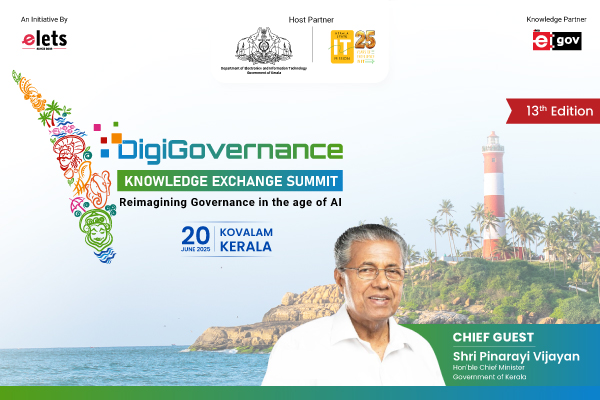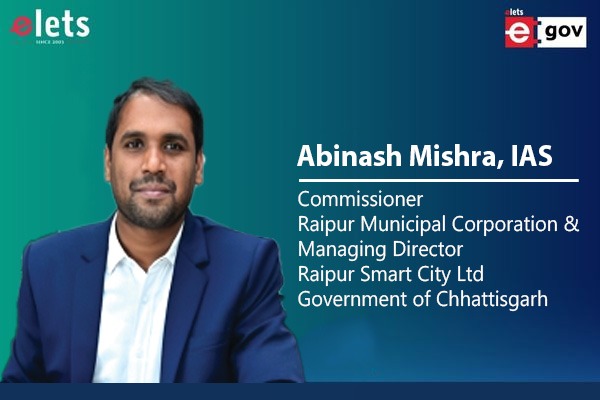
I am sure that many of you would have been stuck in a sudden traffic jam on a perfectly normal day on a predictable route and said to yourself that there is definitely a major accident ahead, or a vehicle breakdown, or a procession. As you look away from your ever-absorbing smartphone, you expect the “ Aha!” moment, where you tell yourself, “look, I was right, there is the broken down mega truck”. But alas, nothing is there. You wonder and get back to your smartphone. You have then witnessed a prime example of Complexity Science at work. And congrats, you were a part of an emergent complex system, commonly called ‘traffic’, writes Nawin Sona, IAS, Secretary, Government of Maharashtra.
A complex system is a large system (physical, biological, social, economic) with a network of interdependent and interconnected parts, which interact with themselves, but at a larger scale, and produce complex phenomena over time and space. The puzzle of traffic is not new, vehicles have little interaction except with the neighbouring vehicle, occupying road space, and the rate of occupation of road space ahead, and the distance between them, yet when congestion will happen, when it will ease, can be answered by Complexity Science. Complexity can be misunderstood as ‘something very difficult to understand’, it is partially true and equally false. Urban Administration, Health or GST, but also something like primary education, or agriculture are fields with great details. But this complexity is different.

All achievements of modern civilisation, like transportation, construction, public health, education, communication systems, banking, money and securities markets, even the United Nations, are all products of complex interactions with millions of elements or parts. One can imagine the ultimate complex machine, the Space Shuttle, or a Boeing Jet, with its billion small parts, each critical in the overall success of the flight. But in administration and public policy, complexity can be very hidden, hiding in plain sight. Poverty, hunger, and climate change are very complex systems waiting to be tackled.

What makes a Complex System

Simple interactions between ‘non- feature rich’ participants who are non-unique and can be considered similar, follow similar rules, systems are linked together simply and there are long chains of interactions. Yet, they form a complex mass phenomenon.

1. Emergence
Complex mass phenomena arising from simple interactions are called Emergent Properties or Emergent Behaviour in technical literature. Urban growth, population dynamics, health and disease, pollution, supply chains, are common complex systems. Sudden growth or demise of a city, the pandemic, global warming, post- pandemic supply chain problems are all various avatars of the complex systemic interactions.
2. High Sensitivity to Initial Conditions
Phenomena are cyclical but can have extreme events triggered by very small changes in systems. This is called the Butterfly Effect. A butterfly beats its wings in Beijing and hurricanes are formed because of that in the Gulf of Mexico. Kind of like an avalanche, but the cause is elsewhere.
3. Chaos and Non Linearity
Sometimes systems go into unpredictable patterns of behaviour called ‘Chaos’, i.e. nonlinear state of the system. Extreme events are caused by going beyond the Tipping Point. The failure in systems is contagious, and propagates very rapidly, rather like the cascading reactions of a Myocardial Infarction (aka heart attack). One airport congestion can cause worldwide disruption. One network failure can create blackouts in the grid. For example, a small outage or mismatch in power consumption and release into the system can cause a cascading failure in an electrical grid and cause blackout. A small virus in China can cause a pandemic due to the coupling of the transportation network (in other words, a pandemic is a health grid cascading failure or chaos ). A collapse of the housing loan ‘subprime crisis’ can cause the debt derivatives market to crash across the world, collapsing giants of finance. Yes, the Domino Effect. Nonlinear is when disproportional changes occur beyond the Tipping Point.
4. Networks
The fact that a small dose of vaccine injected takes over and programs and teaches the immune system to recognise and fight a new virus is a positive example of a Positive Cascade effect. Similarly, giving a recent example (from June 2022), the Fed increasing lending rate is a cascading effect on not just consumer spending, but also on shrinking the gap between supply and demand and taming inflation, albeit a greater and longer- lasting evil than a non-soft landed, designed recession. The Money Multiplier effect, the ‘stimulus package’, the tax holiday, the rebate, are taken for granted in economic terms – the far-reaching impact of a single policy decision. This is because of Networks.
5. Adaptation and Evolution
Another great feature of a complex system is evolving cycling patterns. And these systems have adapted over time and space: the elements nudge each other to adapt and learn. The miraculous aspect is that there is no teacher, no central leader to guide or train the elements of the system. The system teaches itself.
6. Self Organisation
Diverse groups somehow behave coherently and produce a meta-level of common behaviour or develop a structure – a Mexican Wave of behaviour if you will. The self- organisation is such that price changes in the market network will travel way faster than any central agency can organise. A city’s economy runs itself. There is no chief economist for Mumbai. Emergence of patterns – in biology, stripes of the zebra, and the giraffe. In chemistry, the formation of crystals. In fact, the greatest example of self-organisation and emergence would be the self-organisation of the human brain and the emergence of consciousness. Social media and public opinion, sense of development, welfare, sanitation, cleanliness, gender bias, women’s education, revolutionary movements, pure democratic political movements would all be emergent self-organisational behaviour. Example, simple ants, together build complex ant hills. Army ants are capable of complicated, organised phenomena without a central command.
Thankfully, pioneers like Edward Lorenz, John Holland, and Brian W. Arthur literally founded this science and established the Santa Fe Institute, New Mexico, the fountainhead of Complexity Science research in the whole world. Precursors include John Von Neumann and Oskar Morgenstern (Game Theory), Norbert Wiener (Cybernetics), Alan Turing (Adaptation/ Imitation Game ), Herbert Simon (Systems Theory).
The Science part: A Primer of Tools
Complexity Science is essentially an interdisciplinary science combining Maths (Graph Theory, Mathematical Modelling, Statistical Computation Algorithms, Statistical techniques, Modelling and Simulation) and has learned from and contributes to understanding of phenomena in Economics, Meteorology, Physics, Biological Sciences, Social science and also Public Policy and Governance.
Complexity Science and Innovation Complexity science, despite the trappings of abstract concepts, is all about the real world. It is a quest to understand the real world in as much richness as we can predict. [For those well-versed in the history of the sciences, this is a non-newtonian science of dynamic nonlinear, non- deterministic phenomenon]. It can show new ways to innovate in policy and solve difficult problems. The commonest method of Innovation is to do a pilot district, test run a policy, and scale up and scale out. And incrementally, add to the program: interventions, information is designed, the organisation structure is evolved or designed. The touch points are defined. Often the constraints are budget, time, number and quality of manpower, the exclusivity of the persons handling the scheme – a golden mean is achieved and the scheme is rolled out. Where will complexity theory help? The key takeaway is that the focus is on the citizen, the users of the system. Since complex systems consider the human element, and every component of it, it is, in my opinion, a very democratic way of designing government interactions. Ground up.
Methodology
The approach via Complexity Theory would suggest these:
1. Model the targeted system. Modelling means cutting out the unwanted elements and concentrating on core behaviour, and core aspects of the persons which produce these behaviours and desired outcomes.
2. Set up rules of behaviour, and try to simulate and reproduce your real world behaviour as closely as possible. Statistical data helps capture the essence of the mass phenomena you would like to model.
3. Create a model of the problem you are trying to solve or the ideal behaviour you try to achieve.
4. Design interventions and problem solve. Choose interventions in the real world, capture data and reassess, refine models, and redeploy solutions.
5. Design for extreme conditions called Chaos. Know the Tipping Point of the Critical Point where the system goes into overdrive and create alternate mechanisms for these Chaos conditions (floods, traffic jams, epidemics, fuel shortage, market failure).
6. For normalising the system, put in incentives and deterrents.
7. Most of all, ask the right questions.
8. Choose the right frequency first and get lots and lots of data.
9. Analyse, course correct. Step back and look at the big picture and interconnections.
Micro Case Study
Traffic Jams
1. Traffic junctions can be modelled effectively using Complexity Techniques like Agent Based Modelling. Also, a branch of Mathematics, Graph Theory (created in the 18th Century by Leonard Euler) is effectively used to understand crossroads.
2. Adaptive controls are used to create dynamic traffic signal systems. It studies the inflow of traffic using sensors in the road, or CCTV footage. The timing of the signals would vary depending on the time of the day, the day of the week, season, the direction of the traffic, the volume of traffic, say, going straight versus right or left. A simple decision such as to allow a ‘free left turn’ or not can have an impact on system efficiency.
3. Factors which may be taken include the distance between two signals, width of the road (carrying capacity of the road area ), whether heavy vehicles are allowed, or not, if allowed, what is the mix of LMV to HMV. Road side parking, taxi or auto stands near the junction, presence of small hawkers on road, bus stop near a traffic junction, the distance of a U-turn, the presence of a speed breaker.
4. All of these factors can affect congestion modelling.
The solution may be simpler than we think. Maybe altering the timing alone may not solve the problem, but a combination of small factors may prevent a jam, which is essentially an ‘emergent’ phenomenon. Other examples, queuing in airports, deploying health care interventions like vaccination drives, organising large public gatherings, say Kumbh Mela, management of crowded locations like religious pilgrimage sites. In a hilly state like Uttarakhand, roads are the arteries of daily life and the economy. Hence, understanding accessibility of goods and services, logistics centres (hub and spoke model ) are, in my opinion, critical. Also, the planning of remote storage, i.e. warehousing on a PPP model, would ensure enough goods of essential nature (food, medicines, daily needs) in remote areas. In these cases, a Complex Systems approach would do wonders.
Data, AI, IoT and Complexity Science
We have reached a point of development where Complexity Science has accessible and inexpensive tools to study, model and suggest solutions. Many of the tools, like NetLogo, are open source. Apart from that, the greatest source of modelling real world is through IoT combined with AI and Machine Learning. How? IoT networks can provide real time data from the field, say sensors for detecting flow of traffic. Visual analytics based on AI, can look at video CCTV footage to alert for traffic jams. In an urban context, CCTV can also auto-alert for encroachments, illegal constructions, illegal parking, non-clearance of construction debris. Urban flooding (or riverine flooding for that matter) can be modelled using CCTV, flow metres, sensors in stormwater drains (combined with GIS maps). AI in the form of perceptron- based supervised or unsupervised Machine Learning models can help identify patterns – such as price variations in agri-commodities, forecasting hoarding trends, etc.
Data, data everywhere
As policy makers, it pays to think what are the system assumptions, the growth factors, how good is your data, how bad is your data. How much noise is there? Are you asking the right questions, whose questions are you asking? So having historic and live, but pertinent, machine-readable data is an essential starting point for design and control.
Policy, Data & Design of Responder Systems
We have to understand that there are stages of Analytics :
1. Descriptive Analytics – Tells us what is happening
2. Diagnostic Analytics – Tells us why and how it is happening
3. Predictive Analytics – Will tell when and how it will happen
4. Prescriptive Analytics – Tell us what to do to achieve a desired goal or prevent extreme system states.
AI can reach all stages now. While reengineering a system, we need to look with fresh eyes and recast Institutional design itself. Max Weberian hierarchies may need to be collapsed. Redesign communication structure – decide what information and resources flow? Who controls the flow? What information architecture is. Hence, with these insights, major challenging systems can be taken up. A Complex Systems approach, helps us appreciate how the system is dynamic, ever-changing, open (inflows and outflows), unstable, but with a pattern and unpredictable.
Simulation as a Tool of Governance
Urban planning, traffic, health, education, agriculture, natural disasters, crime can all be tackled with Simulation Softwares (NetLogo). Can see extreme cases and normal control parameters and can suggest policy interventions at the right level, and right time.
Conclusion
In all, Complexity Science is a new science, older than Data Science, now attaining maturity. It needs more real world users. The fact that policy makers do depend on Economics, which is more of a pseudoscience, begs the question, why Complexity Science, which captures a far richer picture of the world, is not used more. World over this is changing, and I am sure India, with its inherent complexity, would greatly benefit from this fascinating field. Since you are probably still wondering, the traffic jam was probably because some people were busy looking at smartphones instead of driving.
Be a part of Elets Collaborative Initiatives. Join Us for Upcoming Events and explore business opportunities. Like us on Facebook , connect with us on LinkedIn and follow us on Twitter, Instagram.
"Exciting news! Elets technomedia is now on WhatsApp Channels Subscribe today by clicking the link and stay updated with the latest insights!" Click here!













